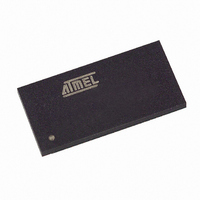AT45DB321B-CI Atmel, AT45DB321B-CI Datasheet - Page 3

AT45DB321B-CI
Manufacturer Part Number
AT45DB321B-CI
Description
IC FLASH 32MBIT 20MHZ 44CBGA
Manufacturer
Atmel
Datasheet
1.AT45DB321B-CC.pdf
(32 pages)
Specifications of AT45DB321B-CI
Format - Memory
FLASH
Memory Type
DataFLASH
Memory Size
32M (8192 pages x 528 bytes)
Speed
20MHz
Interface
SPI, 3-Wire Serial
Voltage - Supply
2.7 V ~ 3.6 V
Operating Temperature
-40°C ~ 85°C
Package / Case
44-CBGA
Lead Free Status / RoHS Status
Contains lead / RoHS non-compliant
Available stocks
Company
Part Number
Manufacturer
Quantity
Price
Company:
Part Number:
AT45DB321B-CI
Manufacturer:
AT
Quantity:
244
Memory Architecture Diagram
Device Operation
Read Commands
2223E–DFLASH–11//03
SECTOR ARCHITECTURE
SECTOR 1 = 266,112 bytes (252K + 8064)
SECTOR 15 = 270,336 bytes (256K + 8K)
SECTOR 16 = 270,336 bytes (256K + 8K)
SECTOR 2 = 270,336 bytes (256K + 8K)
SECTOR 0 = 4224 bytes (4K + 128)
The device operation is controlled by instructions from the host processor. The list of
instructions and their associated opcodes are contained in Tables 1 through 4. A valid
instruction starts with the falling edge of CS followed by the appropriate 8-bit opcode
and the desired buffer or main memory address location. While the CS pin is low, tog-
gling the SCK pin controls the loading of the opcode and the desired buffer or main
memory address location through the SI (serial input) pin. All instructions, addresses
and data are transferred with the most significant bit (MSB) first.
Buffer addressing is referenced in the datasheet using the terminology BFA9 - BFA0 to
denote the ten address bits required to designate a byte address within a buffer. Main
memory addressing is referenced using the terminology PA12 - PA0 and BA9 - BA0
where PA12 - PA0 denotes the 13 address bits required to designate a page address
and BA9 - BA0 denotes the ten address bits required to designate a byte address within
the page.
By specifying the appropriate opcode, data can be read from the main memory or from
either one of the two data buffers. The DataFlash supports two categories of read
modes in relation to the SCK signal. The differences between the modes are in respect
to the inactive state of the SCK signal as well as which clock cycle data will begin to be
output. The two categories, which are comprised of four modes total, are defined as
Inactive Clock Polarity Low or Inactive Clock Polarity High and SPI Mode 0 or SPI
Mode 3. A separate opcode (refer to Table 1 on page 10 for a complete list) is used to
select which category will be used for reading. Please refer to the “Detailed Bit-level
Read Timing” diagrams in this datasheet for details on the clock cycle sequences for
each mode.
CONTINUOUS ARRAY READ: By supplying an initial starting address for the main
memory array, the Continuous Array Read command can be utilized to sequentially
read a continuous stream of data from the device by simply providing a clock signal; no
additional addressing information or control signals need to be provided. The DataFlash
incorporates an internal address counter that will automatically increment on every clock
SECTOR 0
BLOCK ARCHITECTURE
Block = 4224 bytes
BLOCK 1022
BLOCK 1023
BLOCK 126
BLOCK 127
BLOCK 128
BLOCK 129
BLOCK 62
BLOCK 63
BLOCK 64
BLOCK 65
BLOCK 0
BLOCK 1
BLOCK 2
(4K + 128)
8 Pages
PAGE ARCHITECTURE
AT45DB321B
Page = 528 bytes
PAGE 8189
PAGE 8190
PAGE 8191
PAGE 14
PAGE 15
PAGE 16
PAGE 17
PAGE 18
PAGE 0
PAGE 1
PAGE 6
PAGE 7
PAGE 8
PAGE 9
(512 + 16)
3













